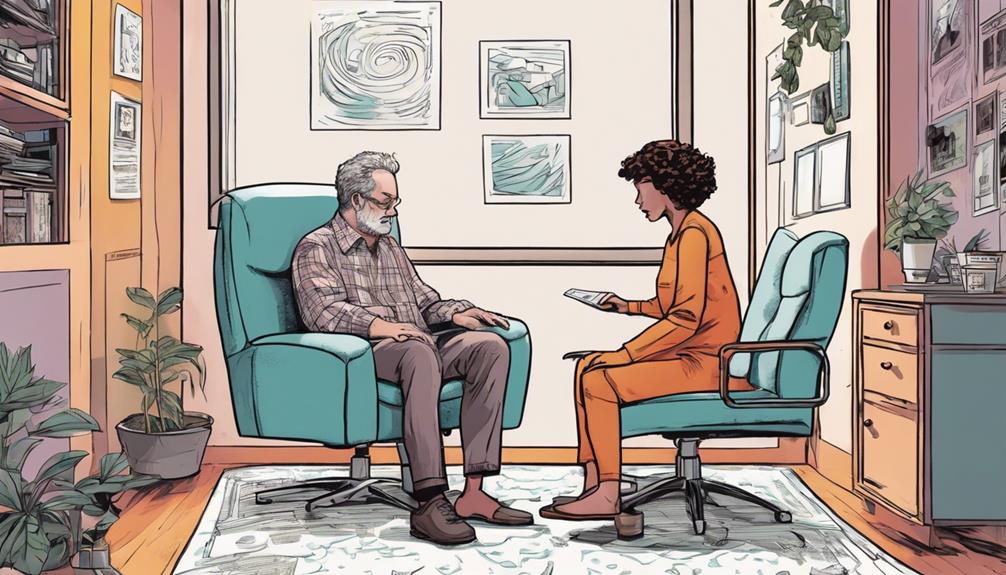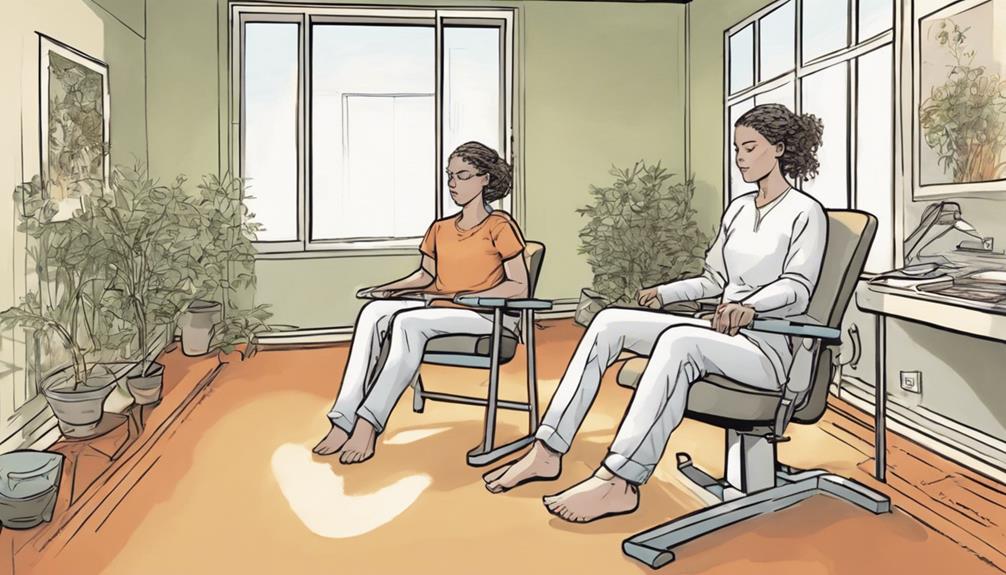Bottom-up processing means you rely on your senses to interpret your environment first, rather than assumptions or prior knowledge. You gather raw data through sight, sound, touch, or other senses, then your brain combines these details into a coherent picture. This approach helps you understand unfamiliar situations accurately because it’s grounded in actual sensory input. If you keep exploring, you’ll discover how this bodily perception shapes your understanding of the world around you.
Key Takeaways
- Bottom-up processing starts with raw sensory data, emphasizing physical sensations before involving prior knowledge or expectations.
- It enables understanding of new or unfamiliar stimuli by analyzing environmental input directly through senses.
- This approach integrates details like shapes, sounds, textures, and colors to create a coherent perception.
- Focusing on bodily sensations allows for unbiased perception, especially in unfamiliar settings or limited visibility.
- It promotes thinking with your body first by grounding perception in actual sensory experiences rather than assumptions.

Bottom-up processing is a method your brain uses to interpret sensory information by starting with raw data from your environment. When you encounter something new or unfamiliar, your senses pick up key details—colors, shapes, sounds, textures—and send this information to your brain. This process is fundamental to sensory perception, because it allows you to build an understanding from the ground up, without relying on prior knowledge or expectations. Instead of jumping to conclusions, your brain gathers data directly from the environment, ensuring that your perceptions are rooted in actual sensory input.
As this raw data reaches your brain, it begins to undergo data integration. This means your brain combines different pieces of sensory information to form a coherent picture. For example, when you see a strange object, your eyes detect its shape, color, and movement, while your skin and ears might notice textures and sounds associated with it. Your brain actively pieces together these elements, determining how they relate to each other. Data integration is vital because it transforms isolated bits of sensory data into meaningful perceptions. Without it, your sensory inputs would remain fragmented and confusing.
This bottom-up approach is especially useful in situations where you face novel stimuli. Since your brain starts with the raw data, it doesn’t rely on assumptions or past experiences that could distort your perception. Instead, it permits an unbiased analysis based solely on the incoming sensory information. For example, when you step into a dark room, your eyes initially send limited data, but your brain continues to process and integrate the available cues—like sounds or faint shapes—to help you navigate safely. This method emphasizes a direct, sensory-driven understanding of your environment, rather than a top-down interpretation rooted in expectations.
Frequently Asked Questions
How Does Bottom-Up Processing Differ From Top-Down Processing?
You might wonder how your brain interprets sensory information differently. Bottom-up processing starts with sensory integration, where your senses send raw data up the perceptual hierarchy to be interpreted. In contrast, top-down processing relies on your prior knowledge and expectations to shape perception. Bottom-up is data-driven, while top-down is concept-driven. Understanding this difference helps you see how your brain constructs your experience of the world from basic sensory input.
Can Bottom-Up Processing Be Consciously Controlled?
You can’t fully consciously control bottom-up processing because it relies on embodied cognition and sensory integration happening automatically. Your body gathers sensory input without deliberate effort, which the brain then processes to understand your environment. While you can influence this process indirectly through focus or attention, the core sensory data flows naturally, making bottom-up processing largely subconscious. Your body and senses lead, and your mind follows.
What Role Does the Body Play in Sensory Perception?
Imagine your body as a ship steering the vast ocean of sensory input. Your bodily awareness acts as the ship’s compass, guiding sensory integration. The body plays an essential role by providing raw data—touch, balance, temperature—that your brain processes, shaping perception. This active bodily involvement helps you understand your environment more clearly, making sensory perception a dynamic dialogue between your senses and physical awareness, rather than just passive reception.
How Does Bottom-Up Processing Influence Learning and Memory?
You can enhance learning and memory through embodied cognition, which emphasizes how your body influences your mind. Bottom-up processing drives sensory integration, allowing you to gather raw data from your environment through your senses. This process helps you form stronger connections and memories by engaging your body first, making learning more effective. When you use your body actively, you support deeper understanding and retention, leveraging sensory input to boost cognitive functions.
Are There Any Real-World Examples of Bottom-Up Processing in Action?
Did you know that 70% of sensory information is processed through sensorimotor integration? In real life, you experience bottom-up processing when you catch a ball, relying on embodied cognition to coordinate your body’s movements with visual input. This process helps your brain interpret sensations and act accordingly, showing how your body and senses work together seamlessly in everyday situations.
Conclusion
By embracing bottom-up processing, you harness the incredible power of your senses to interpret the world around you. Think of your body as an unstoppable detective, gathering clues with every touch, taste, and sight—transforming simple data into vivid understanding. When you trust this natural process, you access a mental superpower that’s more profound than any supercomputer. So, let your body lead the way; it’s the ultimate guide to perceiving reality in its purest, most astonishing form.










